Easy Kitchen

What are some time-saving tips for meal prep in the kitchen ?
Meal prep is an essential part of a healthy and organized lifestyle. Here are some time-saving tips for meal prep in the kitchen: 1. Plan ahead to avoid last-minute trips to the grocery store and ensure that you have everything you need for your meals. 2. Make a grocery list of all the ingredients you will need to save time by avoiding unnecessary trips to the store. 3. Choose simple recipes that require minimal preparation and cooking time, such as one-pot or pan recipes. 4. Cook in bulk to save time during meal prep by cooking large portions of food and then dividing them into individual servings for easy storage and reheating later in the week. 5. Use a slow cooker or pressure cooker to cook food while you are away from home, so you can come back to a delicious and ready-to-eat meal. 6. Prep vegetables ahead of time by washing, chopping, and storing them in airtight containers in the fridge for easy access when you need them. 7. Use frozen vegetables and fruits, which are just as nutritious as fresh ones and can save you a lot of time during meal prep. 8. Keep your kitchen clean and organized to save time during meal prep by ensuring that everything is easily accessible when you need it.
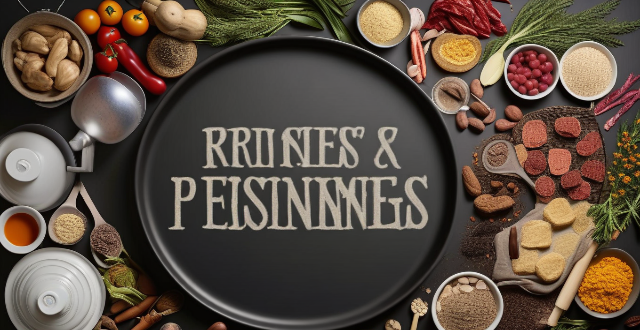
What are some quick and easy recipes for beginners ?
The text provides quick and easy recipes for beginners, including Spaghetti with Tomato Sauce, Grilled Cheese Sandwich, and Omelette. These dishes require minimal ingredients and effort, making them perfect for those new to cooking. The instructions are straightforward and easy to follow, allowing anyone to create delicious meals at home.
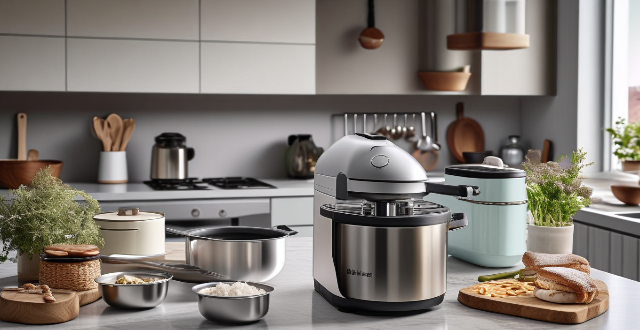
How can I use kitchen appliances to save time while cooking ?
Using kitchen appliances like food processors, slow cookUsing kitchen appliances like food processors, slow cookers, rice cookers, slow cookers, electric pressure cookers, rice cookers, and stand mixers can significantly save time in meal preparation. These appliances offer features such as chopping, grinding, making dough, cooking at different heat settings, and precise mixing, allowing for efficient and convenient cooking experiences.
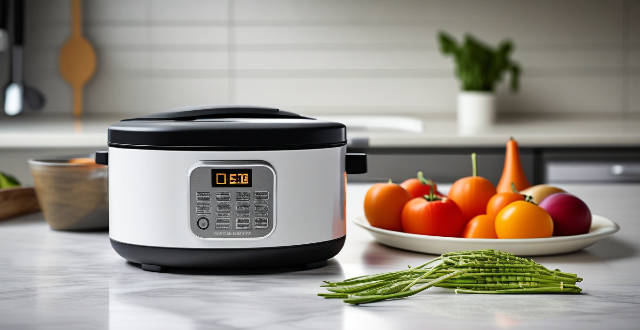
What are some must-have kitchen gadgets for healthy eating ?
In pursuit of healthy eating, having the right kitchen gadgets can significantly improve the preparation and enjoyment of nutritious meals. This article lists essential tools such as a high-quality chef's knife for efficient chopping, a food processor for versatile cooking tasks, a steamer basket for nutrient-rich cooking, and other devices like slow cookers, spiralizers, and immersion blenders that facilitate healthy meal preparation. Each device is discussed in terms of its benefits, uses, and why it is considered essential for healthy cooking. By incorporating these tools into your kitchen setup, you can make preparing healthy meals easier and more enjoyable, setting the foundation for a lifetime of healthy eating habits.

How can I make a fast and easy dinner ?
Here are some tips on how to make a fast and easy dinner: 1. Plan ahead by taking time during the weekend to plan your meals for the week. This will help you avoid last-minute trips to the grocery store and ensure that you have all the ingredients you need on hand. 2. Choose simple recipes that require minimal preparation and cooking time. Look for recipes that use fewer than five ingredients and can be cooked in one pot or pan. 3. Use convenience foods such as pre-chopped vegetables, pre-cooked proteins, and ready-to-heat side dishes to save time and effort in the kitchen. 4. Cook enough food for two meals at once and refrigerate or freeze the leftovers for another day. This will save you time and ensure that you always have a healthy meal ready to go. 5. Clean up as you cook by wiping down counters, washing dishes, and putting away ingredients as soon as you're done using them. This will keep your kitchen tidy and prevent clutter from building up while you cook.
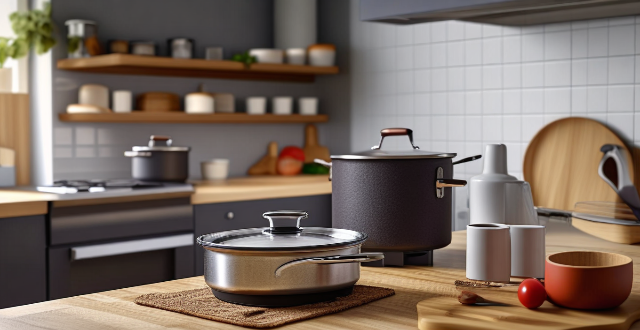
What are the key features to look for when purchasing a new kitchen stove ?
When purchasing a new kitchen stove, key features toWhen purchasing a new kitchen stove, key features to, energy efficiency, cooking power Choosing a stove with these essential features will enhance your cooking experience and ensure you get the most out of your investment.

How can I keep my kitchen clean and hygienic ?
Keeping a kitchen clean and hygienic is essential for maintaining good health and preventing the spread of bacteria and other harmful substances. Here are some tips on how to keep your kitchen clean and hygienic: Start with a clean slate, wash hands frequently, use separate cutting boards, clean as you go, store food properly, clean appliances regularly, disinfect regularly, and take out the trash. By following these simple tips, you can keep your kitchen clean and hygienic, which will help keep you and your family healthy.

Can you suggest some quick and easy dinner recipes for busy weeknights ?
When you're short on time but still want to enjoy a delicious and satisfying dinner, these quick and easy recipes are perfect for busy weeknights. They require minimal preparation and cooking time, making them ideal for those days when you just don't have the energy to spend hours in the kitchen. Here are some of our favorite options: Grilled Cheese Sandwiches: Grilled cheese sandwiches are a classic comfort food that can be made in just minutes. Simply butter two slices of bread, place a slice of cheese between them, and grill until golden brown and melted. You can also add toppings like sliced tomato, bacon, or avocado for extra flavor. Pasta with Tomato Sauce: Pasta with tomato sauce is another quick and easy option that comes together in just 20 minutes. Cook your favorite pasta according to package instructions, then sauté chopped onions and garlic in olive oil until softened. Add a can of crushed tomatoes and let simmer for a few minutes before tossing with the cooked pasta. Garnish with fresh basil and Parmesan cheese if desired. Stir-Fry Vegetables: Stir-fry vegetables are a great way to use up any leftover veggies you have on hand. Simply chop your vegetables into bite-sized pieces and sauté them in a hot wok or skillet with some oil and your favorite seasonings (such as soy sauce, ginger, or garlic). Serve over rice or noodles for a complete meal. Quesadillas: Quesadillas are an easy and versatile dinner option that can be customized to suit your tastes. Simply fill a tortilla with shredded cheese, diced vegetables, and/or cooked protein like chicken or beef. Fold the tortilla in half and cook in a skillet until the cheese is melted and the tortilla is crispy. Serve with salsa, sour cream, or guacamole for dipping. Roasted Vegetables: Roasting vegetables is an easy way to add flavor and nutrition to any meal. Simply chop your favorite vegetables (such as broccoli, cauliflower, carrots, or sweet potatoes) into bite-sized pieces and toss with olive oil, salt, and pepper. Roast in a preheated oven at 400°F for 20-30 minutes, or until tender and caramelized. Serve alongside grilled chicken or fish for a complete meal.
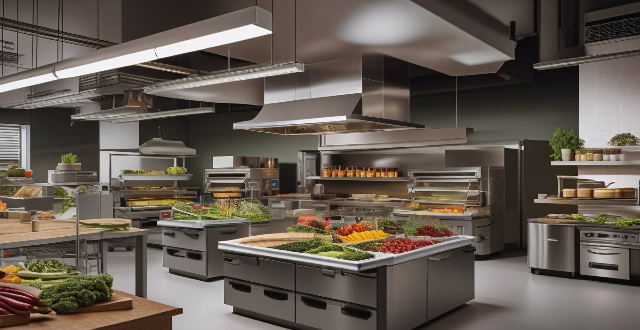
How can cross-contamination be prevented in a commercial kitchen ?
Cross-contamination is a significant concern in commercial kitchens, where food safety and quality are paramount. To prevent it, strict procedures and practices must be implemented to minimize the risk of harmful bacteria or allergens spreading from one food item to another. Key strategies include using separate cutting boards and utensils for different types of food, proper handling of raw foods, sanitizing work surfaces and equipment, avoiding cross-contact during cooking, safe storage practices, allergen management, and maintaining personal hygiene and staff training. By implementing these practices, you can significantly reduce the risk of cross-contamination in your commercial kitchen, ensuring that your customers receive safe and high-quality meals every time.

How can I make the most of leftover ingredients to save time and money in the kitchen ?
How Can I Make the Most of Leftover Ingredients to Save Time and Money in the Kitchen? Saving time and money in the kitchen is a common goal for many home cooks. One effective way to achieve this is by making the most of leftover ingredients. Here are some tips on how to do so: - Plan ahead by making a meal plan and shopping smart to avoid wastage. - Store leftovers properly in the refrigerator or freezer using airtight containers. - Get creative with leftovers by transforming them into new dishes, combining them, adding them to soups and stews, or trying new recipes. - Don't be afraid to experiment with different flavors and combinations. - Share leftovers with family and friends or donate them to food banks or other charitable organizations.
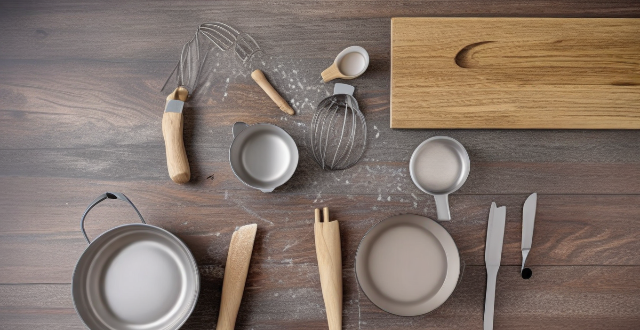
What are the best tools for baking that every kitchen should have ?
The essential baking tools for a kitchen include measuring cups and spoons, digital scales, mixing bowls of various materials, whisks, mixers, baking pans, oven mitts, thermometers, cooling racks, rolling pins, pastry cutters, cookie scoops, parchment paper, piping bags, offset spatulas, zesters, and dough punches. These tools ensure precise measurements, effective mixing, even baking, and easy handling of baked goods, contributing to successful and consistent baking outcomes.
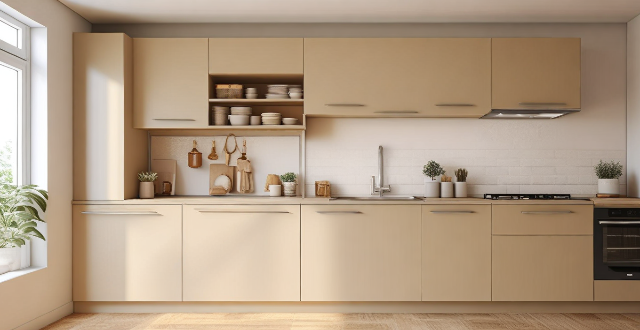
What are some time-saving tips for organizing my kitchen pantry ?
Organizing your kitchen pantry can save time and make meal preparation more efficient. Here are some tips: declutter, use clear containers, label everything, group like items together, use shelves and racks, rotate stock, keep a pantry inventory list, and regularly clean your pantry. These strategies will help you create a functional and organized space that meets your needs.
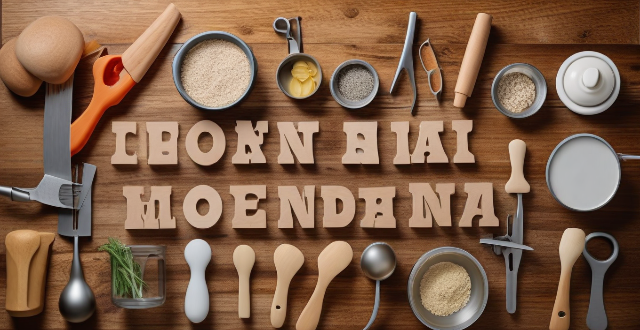
What are the essential kitchen tools every home cook should have ?
The text provides a list of essential kitchen tools that every home cook should have, including a chef's knife, cutting board, measuring cups and spoons, mixing bowls, saucepan, skillet/frying pan, baking sheet/roasting pan, whisk, wooden spoon or spatula, can opener, garlic press, grater, peeler, tongs, and colander/strainer. These tools are important for preparing meals and ensuring accurate measurements and successful cooking.
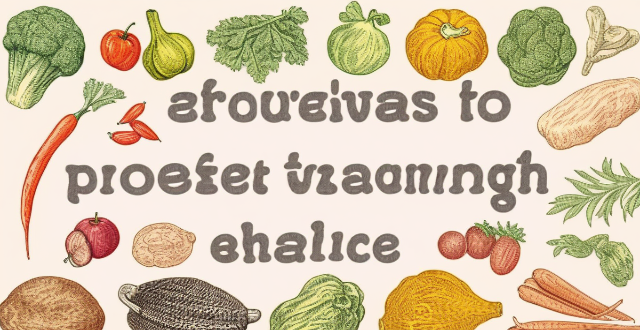
How can I streamline my cooking process to save time in the kitchen ?
The text provides tips and tricks for streamlining the cooking process, including planning ahead, using slow cookers or pressure cookers, prepping ingredients in advance, cooking once and eating multiple times, and cleaning as you go. These strategies aim to save time, reduce stress, promote healthy eating, and create a more enjoyable cooking experience by emphasizing preparation and organization.
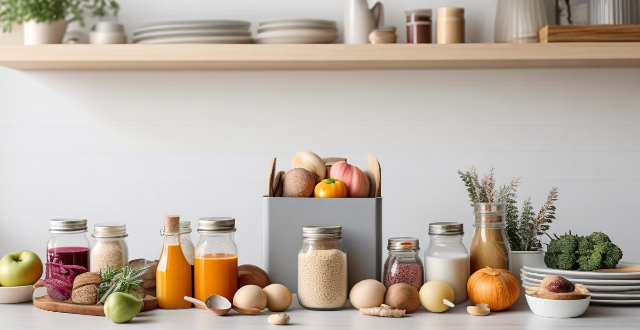
How can I simplify my grocery shopping process to save time in the kitchen ?
Simplifying the grocery shopping process can save time in the kitchen. Planning ahead, creating a meal plan and categorized shopping list, using technology, choosing efficient shopping strategies, and streamlining meal preparation with batch cooking and simple recipes can all contribute to a more efficient and enjoyable cooking experience.
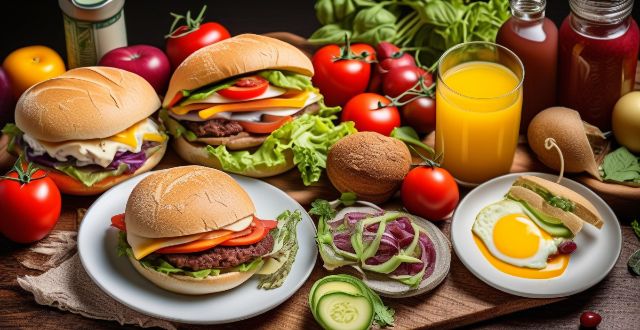
What are some good options for quick and easy vegetarian meals ?
Vegetarian meals can be quick and easy to prepare. Here are some options: stir-fry vegetables with rice or noodles, quinoa salad with roasted vegetables, vegetable soup or broth, veggie burgers with avocado and salsa, and pasta with pesto and cherry tomatoes. These meals can be customized based on preferences and what's available in the kitchen.

What are the advantages of using a slow cooker in the kitchen ?
The text discusses the advantages of using a slow cooker in the kitchen, which include convenience, energy efficiency, flavor intensification, healthier cooking methods, versatility, cost-effectiveness, and safety. Slow cookers offer a "set it and forget it" approach, use less electricity than conventional ovens or stovetops, allow flavors to meld together more thoroughly, require minimal fat use, are versatile for one-pot meals, can use economical cuts of meat, have cool touch surfaces for safety, and do not involve open flames. Incorporating a slow cooker into your culinary toolkit can lead to delicious, hassle-free meals.

What are some ways to organize my kitchen to make cooking more efficient ?
Organizing your kitchen can greatly enhance the cooking experience by making it more efficient and enjoyable. Here are some strategies to consider: 1. Zone Cooking Areas 2. Declutter Regularly 3. Smart Storage Solutions 4. Group Like Items Together 5. Maximize Fridge and Freezer Space 6. Keep a Clean Sink 7. Lighting and Safety

How can I make sure my infographic is visually appealing and easy to understand ?
How to ensure your infographic is visually appealing and easy to understand. An infographic should be both visually appealing and easy to understand. Here are some tips on how to achieve that: - Choose a clear and simple design - Organize information logically - Use visual cues to guide the eye - Make sure text is readable - Test your infographic

How do I choose the right blender for my kitchen needs ?
When selecting a blender, consider your primary usesWhen selecting a blender, consider your primary uses size and material, ease of High-end models offer advanced features but mid-range blenders can provide good value for money. Choose a blender that fits your needs, features, and budget.

What are some easy ways to fix a slow-running computer without professional help ?
A slow-running computer can be frustrating, but there are several easy ways to fix it without seeking professional help. In this article, we will discuss some simple steps you can take to improve the performance of your computer, including checking for viruses and malware, uninstalling unnecessary programs, cleaning up your hard drive, managing startup programs, updating your operating system and drivers, and monitoring resource usage. By following these easy steps, you can significantly improve the performance of your slow-running computer without seeking professional help.

Can you suggest easy French dessert recipes for beginners ?
Easy French Dessert Recipes for Beginners French desserts are known for their elegance and flavor, but they can also be easy to make. Here are some simple French dessert recipes that even beginners can try: Tarte Tatin: - Ingredients: apples, sugar, butter, puff pastry - Steps: preheat oven, peel and core apples, melt butter and sprinkle sugar in skillet, cook apples until tender, caramelize syrup, roll out puff pastry, place over apples, bake until golden brown, cool and invert onto serving plate. Chocolate Mousse: - Ingredients: dark chocolate, eggs, sugar, heavy cream - Steps: melt chocolate, separate egg yolks and whites, beat yolks with sugar until pale and thick, beat whites until soft peaks form, fold melted chocolate into yolk mixture, fold in whites, whip cream until stiff peaks form, gently fold whipped cream into chocolate mixture, spoon into serving dishes and chill before serving. Crème Brûlée: - Ingredients: heavy cream, sugar (plus extra for topping), egg yolks, vanilla extract - Steps: preheat oven, heat cream and sugar until simmering, whisk egg yolks and sugar until combined, slowly pour hot cream into egg mixture while whisking constantly to prevent curdling, stir in vanilla extract, strain mixture through sieve into measuring cup or pitcher, pour into ramekins placed in baking dish with hot water halfway up sides of ramekins, bake until set but slightly jiggly in center, cool to room temperature then chill for at least 2 hours before serving; just before serving sprinkle each crème brûlée with thin layer of sugar and use kitchen torch to caramelize sugar until golden brown.
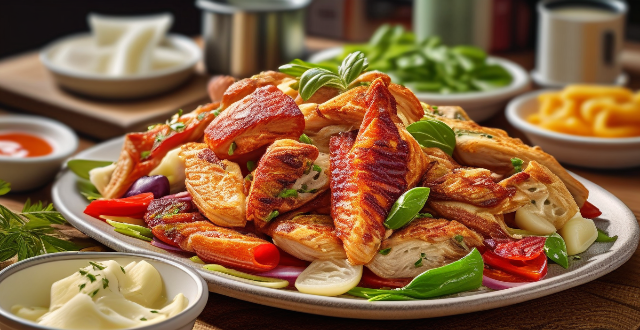
What are some easy and quick low-calorie meal prep ideas for busy weeknights ?
Easy and quick low-calorie meal prep ideas for busy weeknights include grilled chicken salad jars, zucchini noodle bowls, quinoa salad with roasted vegetables, and turkey lettuce wraps. These meals can be prepared ahead of time and stored in the fridge for easy assembly or reheating on busy nights. Planning ahead and choosing recipes that are both nutritious and satisfying is key to successful meal prep.

What are some of the most extravagant celebrity mansions ?
The most extravagant celebrity mansions are a testament to their wealth and fame. From Oprah Winfrey's Montecito Estate to Bill Gates' Xanadu 2.0, these sprawling estates and luxurious penthouses boast impressive features like multiple buildings, gourmet kitchens, tennis courts, gyms, tea houses, garages that can hold up to 23 cars, tram systems, libraries with domed roofs, reception halls with walls of glass overlooking lakes, state-of-the-art recording studios, pool houses with full kitchens, basketball courts, private movie theaters, hot tubs on outdoor decks, and private beaches on the Atlantic Ocean.
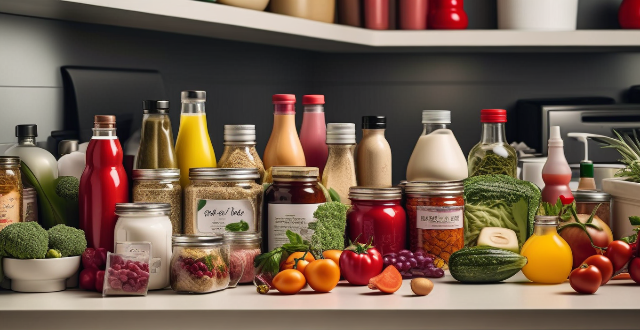
How can I reduce food waste in my kitchen ?
To reduce food waste in your kitchen, you can plan meals ahead of shopping, shop smart by making a list and buying fresh produce, store foods properly using airtight containers, understand expiration dates, preserve food through techniques like freezing and dehydrating, get creative with leftovers, practice portion control, and educate yourself on the environmental impact of food waste.
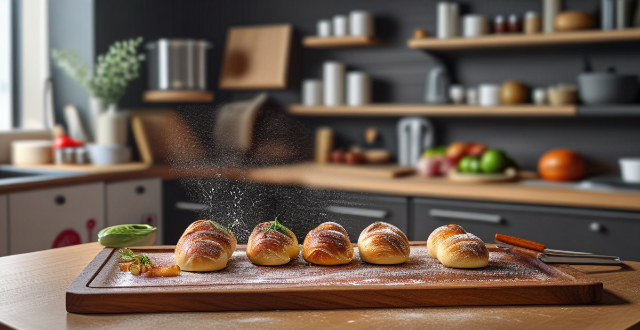
How does a food processor save time in the kitchen ?
A food processor saves time in the kitchen by chopping, grating, pureeing, kneading dough, slicing, shredding, and making pie crust quickly and efficiently.
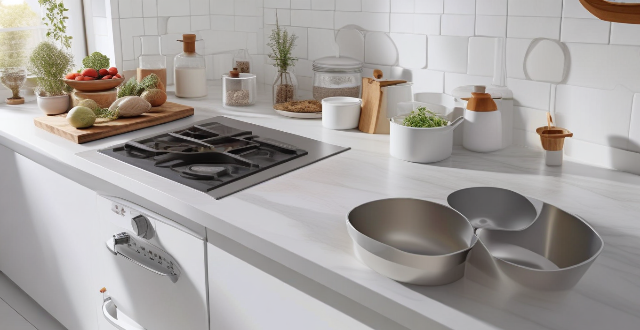
How can cross-contamination be prevented in a kitchen ?
Cross-contamination in kitchens can be prevented through various methods, including maintaining personal hygiene, proper food preparation, using correct cooking techniques, implementing appropriate storage practices, following cleaning routines, and managing waste effectively. These practices are crucial for ensuring food safety and avoiding foodborne illnesses.
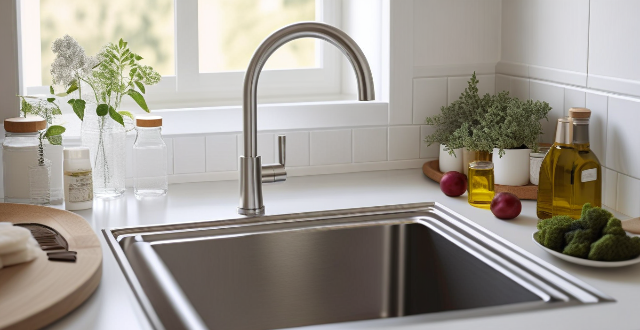
What is the best way to clean and maintain stainless steel kitchen appliances ?
Stainless steel kitchen appliances require proper cleaning and maintenance to keep them looking their best. To clean them, gather materials such as a microfiber cloth, mild dish soap, water, white vinegar, baking soda, and olive or mineral oil for polishing. The cleaning process involves removing grease and stains with a damp cloth, rinsing and drying the surface, removing stubborn stains with a baking soda paste, and polishing the surface with oil. In addition to regular cleaning, maintenance tips include avoiding harsh chemicals and abrasive cleaners, using a gentle touch when cleaning, keeping appliances away from direct sunlight and heat sources, and using protective covers when not in use.

How do I properly use a chef's knife in the kitchen ?
Using a chef's knife properly is essential for efficient and safe food preparation. Here are some tips on how to use a chef's knife correctly: Holding the Knife Correctly: Hold the handle firmly with your dominant hand, using a grip that feels comfortable and secure. Place your index finger and thumb on either side of the handle, with your other fingers curled around it. Keep your thumb tucked in towards the handle to avoid accidents. Chopping Technique: Maintain a slight angle (about 20 degrees) between the blade and the cutting board to make it easier to slice through tough ingredients. Use a rocking motion, pressing down on the blade at the end closest to the tip and then lifting at the handle end, to create a smooth chopping action. Slicing Technique: Start by drawing the blade back slightly before making the cut. As you push down on the blade, pull it towards you to make a long, even slice. Safety Tips: Sharpen your knife regularly as a sharp knife is safer than a dull one. Always keep your fingers out of the path of the blade to avoid accidents. Use a stable cutting board to protect your countertops and provide a safe surface for cutting. By following these guidelines, you can effectively and safely use a chef's knife in the kitchen. Remember to practice regularly to improve your skills and confidence with this versatile tool.